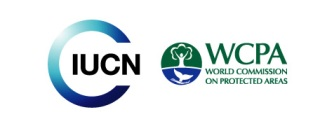PDF: Integrating Biodiversity into the Tourism Sector
Citation
Biodiversity Planning Support Programme. Guide to Best Practices for Sectoral Integration: Integrating Biodiversity into the Tourism Sector. United Nations Development Programme/United Nations Environment Programme/Global Environmental Facility.
Download PDF
Summary This report focuses on how to incorporate “global best tourism practice” into practical activities which promote conservation and sustainable use of biodiversity, especially through National Biodiversity Strategy and Action Plans (NBSAPs). This has been attempted using both a “top-down” and a “bottom-up” approach.
The top-down approach was initiated through a commission to provide a global overview of the existing “state of the art” on the integration of biodiversity into the tourism sector (and its converse), whilst the bottom-up approach was undertaken by commissioning 12 national case studies on integration of biodiversity and tourism in a range of countries with a broad spectrum of biodiversity, economic and political profiles (Belize, Botswana, Canada, Chile, Costa Rica, Kazakhstan, Korea, Mexico, Peru, Seychelles, South Africa and Trinidad & Tobago). (All 12 case studies are available as separate pdf files on the Biodiversity Planning Support Program websitex.)
The top-down and the bottom-up were brought together at an International Workshop, “Integrating Biodiversity and Tourism”, held in Mexico City from March 29th-31st 2001, and hosted by SEMARNAT (the Mexican Ministry of the Environment and Natural Resources) and SECTUR (the Mexican Ministry of Tourism), out of which this guide has been produced.
In order to assist national biodiversity planners who may be unfamiliar with the tourism sector, an annotated bibliography of relevant print and on-line documents is also vailable on the Biodiversity Planning Support Program website.
As stated above, the main objective of this report is to provide national biodiversity planners with a practical tool to allow them to better integrate their plans and activities with those of the tourism sector. The report should, however, also assist those working within the tourism industry to better appreciate the growing importance of “biodiversity” as a significant consideration in ALL tourism planning, not just in biodiversity “hotspots”.
We hope that different sections of the report will be useful to policy makers and implementers, biodiversity planners, park rangers, tour operators, hotel owners and managers, planners and builders, NGO representatives and local communities.
Specifically, the guide aims to: 1. assist biodiversity planners to better understand the tourism sector by: clarifying concepts and identifying sustainable tourism practices for biodiversity planners; identifying best practices in sustainable tourism policies, especially with respect to impacts on biodiversity; highlighting examples of the kind of stakeholder relationships that drive the tourism/biodiversity dynamic. 2. assist tourism planners and practitioners to better understand biodiversity as a necessary consideration in their own sector by: identifying practical tools to allow tourism planners to develop a more positive interaction with biodiversity planners; helping local communities, NGOs, government officials and park managers, etc. to design sustainable tourism projects, and identifying best practice for tourism operators. 3. identify ways to improve the relationship between biodiversity planners and (sustainable) tourism planners so as to better protect areas of significant biodiversity value by: a) providing evidence that ecotourism can be an economically viable alternative to more destructive development options; b) identifying alternatives to conventional mass tourism practices that are less harmful to the natural and sociocultural environment.
Throughout this report there is an emphasis on the potential for sustainable tourism to generate economically viable development alternatives which contribute to biodiversity conservation goals, and from which local communities might benefit, thus allowing tourism to contribute towards the three main goals of the CBD: biodiversity conservation, sustainable use, and equitable sharing of the benefits arising from this use. Achieving this goal requires that tourism and biodiversity planners understand each other’s goals, skills and constraints.
This report represents one part of an ongoing activity to gather together links to the best, most relevant information on the integration of biodiversity and tourism into one place easily accessible to national biodiversity planners. The main goal of this BPSP thematic study has been to try to create a better bridge between best policy guidance on the one hand, and using this guidance to enable more effective promotion of practical biodiversity conservation through tourism-related activities on the other.
In this report, we try to link three different levels of information — (i) policy guidance/principles; (ii) case study experience with implementation of this policy guidance; and (iii) links to tools and resources which can assist implementation.
Keywords
tourism, biodiversity, sustainable tourism planning, convention on biological diversity, partnerships, ecotourism, local community involvement




